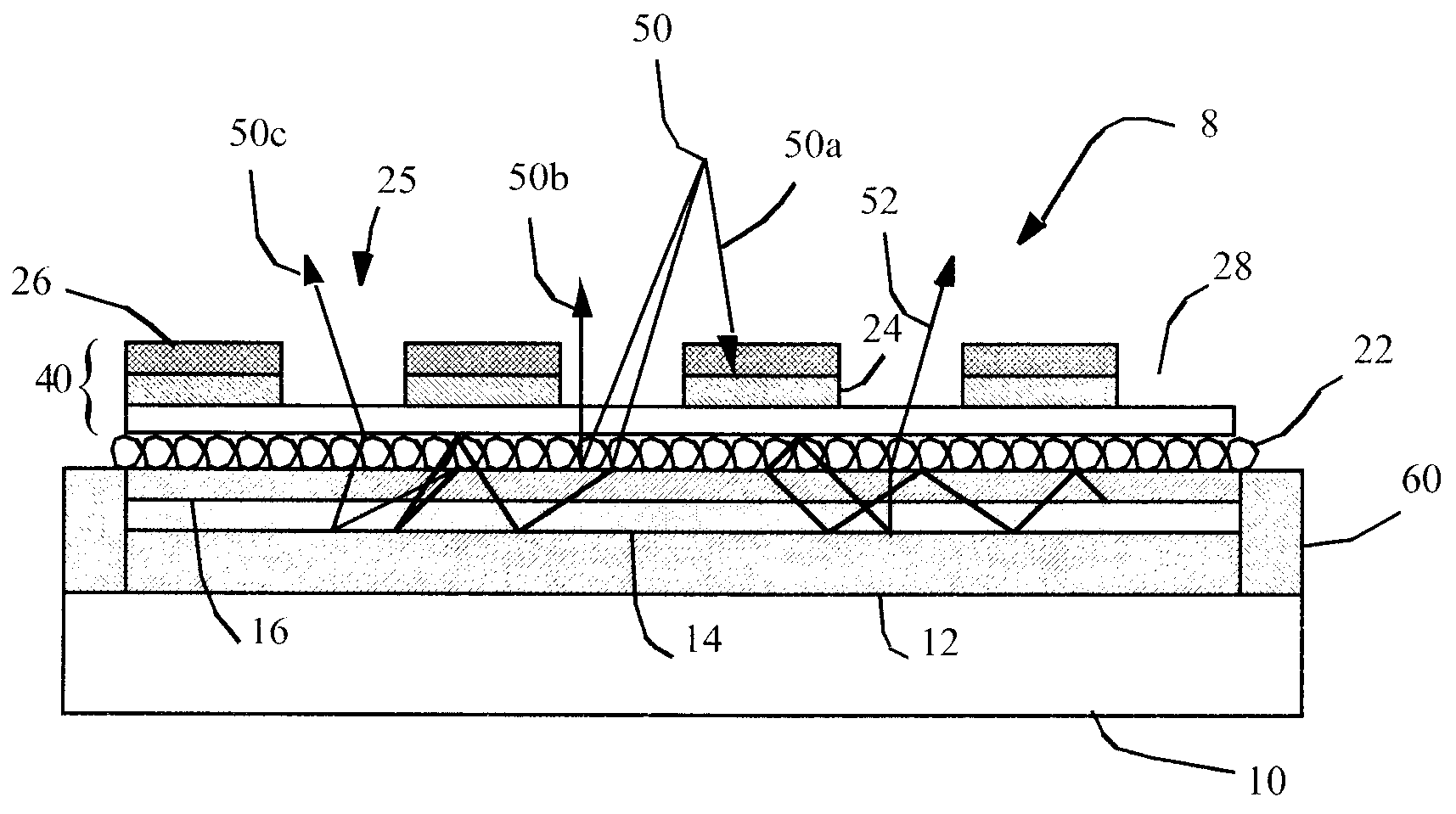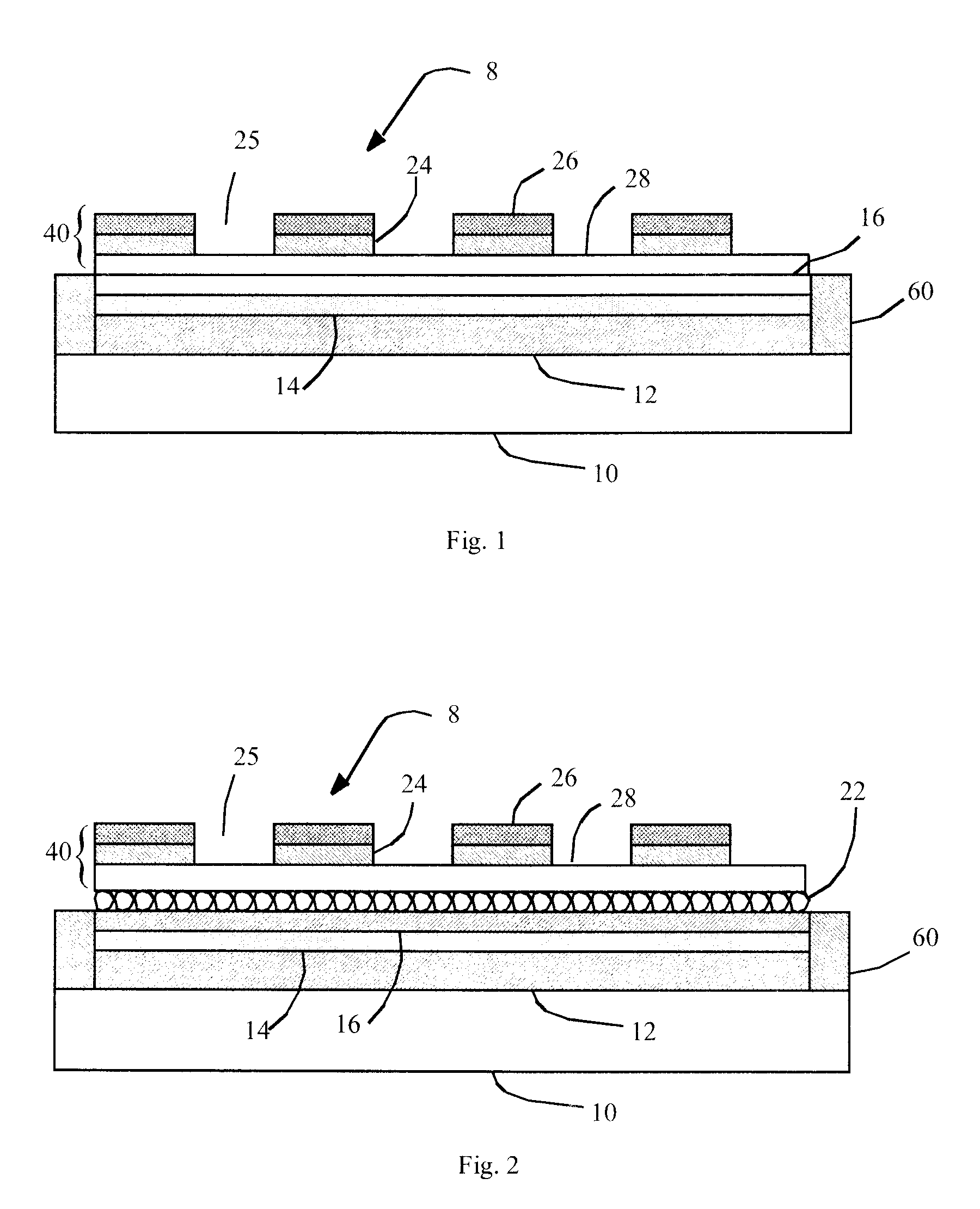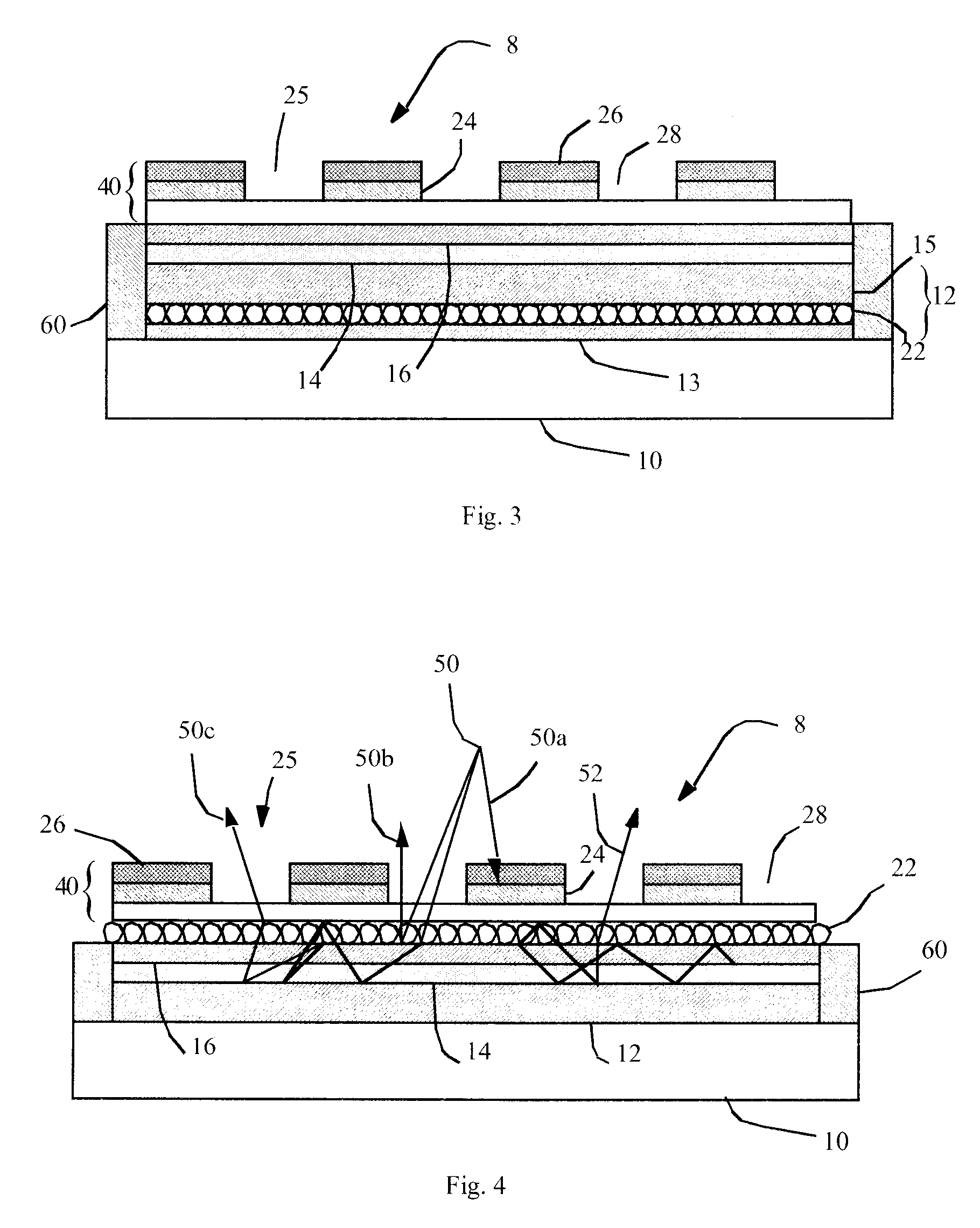Electroluminescent device having improved contrast
a technology of electroluminescent devices and contrast, which is applied in the direction of semiconductor devices, electrical equipment, material nanotechnology, etc., can solve the problems of high manufacturing cost, low light output efficiency, and difficulty in combining multi-color output from the same chip, so as to increase the ambient contrast of an electroluminescent device and reduce the light emission of the electroluminescent device
- Summary
- Abstract
- Description
- Claims
- Application Information
AI Technical Summary
Benefits of technology
Problems solved by technology
Method used
Image
Examples
Embodiment Construction
[0034]According to one embodiment of the present invention, an electroluminescent (EL) device comprises a first electrode and a second electrode having an EL unit formed there-between, wherein the second electrode is transparent and a contrast-enhancement element is formed on a side of the second electrode opposite the EL unit and has a geometric area for controlling ambient light contrast ratio of the electroluminescent device. As used herein, a geometric area is a spatial area having a shape and an opening within the spatial area also having a shape. The openings for the contrast enhancement element are transparent in several of the exemplary embodiments disclosed herein. In a typical embodiment, at least one of the electrodes is patterned to form discrete light-emitting areas and the shape of the geometric area corresponds to the shape of the patterned light-emitting area.
[0035]In a further embodiment of the present invention, the contrast enhancement element comprises a transpar...
PUM
 Login to View More
Login to View More Abstract
Description
Claims
Application Information
 Login to View More
Login to View More - R&D
- Intellectual Property
- Life Sciences
- Materials
- Tech Scout
- Unparalleled Data Quality
- Higher Quality Content
- 60% Fewer Hallucinations
Browse by: Latest US Patents, China's latest patents, Technical Efficacy Thesaurus, Application Domain, Technology Topic, Popular Technical Reports.
© 2025 PatSnap. All rights reserved.Legal|Privacy policy|Modern Slavery Act Transparency Statement|Sitemap|About US| Contact US: help@patsnap.com



